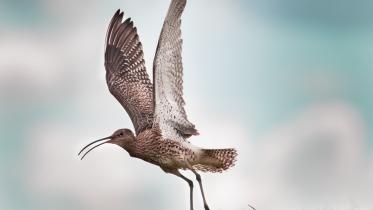Guidance - Wind farms and Pollinators
Towards a pollinator-friendly wind farm network
Scotland’s wind energy industry is increasingly celebrated as Scotland’s most significant source of renewable energy. The majority of the UK’s large capacity wind farms are in Scotland and they can play a role in helping our biodiversity aspirations and if managed in a pollinator-friendly fashion contribute to halting and reversing the loss of pollinating insects in Scotland.
When we manage land for pollinators, we frequently deliver a positive outcome for wider nature – for our wild plants, for the birds and mammals that rely on them for food and cover. What we do to help pollinators enhances biodiversity more generally.
Pollinators needs are not particularly complex. They require food, shelter, and safety and many of those needs can be met by simply doing things less intensively and making simple often inexpensive changes to the way we manage patches of land.
Managing for pollinators
There are many steps we could take to make wind farms more pollinator-friendly.
Identify good practice in planning windfarms. The design stage offers an opportunity to consider habitat management plans. It is an opportunity to factor in mitigation and enhancement activities using pollinator-friendly habitat.
The design of beneficial practices for pollinators around wind farms might simply be a case of identifying existing areas which provide food, shelter and nesting sites for pollinators, such as bare-earth banks (good for mining bees), hedgerows (good for nesting bumblebees and feeding a range of pollinators), and florally diverse verges (potentially good forage for pollinators).
Reducing mowing regimes has the potential to be a huge help to pollinators. By avoiding mowing between March and October a key feeding window for pollinators remains open. This also protects flowering native plants such as knapweed, bird’s-foot trefoil and clovers, all of which are known to be hugely beneficial for pollinators.
Pesticides are harmful for pollinators. By reducing or eliminating the use of herbicides there will an increased likelihood of more flowers for pollinators.
Our pollinating insects require more than just food and shelter, they also need nesting sites. This is often easier to provide than it initially seems. By leaving long grass at the base of hedgerows and providing bare earth banks and small walls these can provide a range of safe nesting sites.
Flowering native hedgerows are particularly good for pollinators, and much better than fencing. Not only do they provide a concentration of food sources (thus saving energy for pollinators in foraging), but they can act as green corridors across often challenging countryside. If maintenance is carried out between November and February this will suit pollinators feeding cycles.
Finally raising awareness is an often overlooked activity. Changing the management of any site can draw occasional curiosity or even criticism. It is important to explain to casual observers, workplace staff, and contractors alike that you are managing your site for the benefit of pollinators – which are crucial to our environment. Where appropriate you should look to include the input of your ecological clerk of works. By sharing information or using signage you can head off any concern’s some may have about sites being ‘abandoned’.
Download - Pollinators Managed for Wildlife sign
Important plants for pollinators
Many of our most popular native plants are fantastic for pollinators. Amongst those which are particularly beneficial are several which may naturally occur around wind farms in Scotland:
- bird’s-foot trefoil
- clover
- dandelion
- knapweed
- heather
- vetch
- yellow rattle
- willow
- hawthorn
The value of bare ground and hedgerows
Areas of bare earth are important for some species of bees - the majority of British solitary bee species for example nest in the ground; and many solitary wasps may make their nest tunnels in the soil. About 85% or our solitary bees are mining bees.
Hedgerows provide both a food source and a nesting opportunity for pollinators. They do not need to be the tidy hedge you might associate with a suburban garden. A variety of native trees and shrubs can be used to create valuable hedges. Amongst them are willows, blackthorn (spring flowering), hawthorn, wild rose, bramble, and Ivy. A mix of species provides food and shelter throughout the year.
Partnership working
In some instances, the land around a wind farm may not be owned by the operator. In those instances, where the land is perhaps leased, this might place some restrictions on what can, and cannot, be done. Nevertheless, there are often opportunities to intervene in a pollinator-friendly fashion. This might, for example, be in the way the verges around tracks are managed or in the planting around turbine bases and substations. Some of these measures are small, unobtrusive and do not require long term management commitments, but in the short term these can be hugely helpful to pollinators.
Why help pollinators
Our pollinators help to maintain healthy plant populations and shape the nature and landscapes we all enjoy and benefit from. However, they are under pressure and creating and managing habitat for their benefit is one of the key things we can do to help them.
We have lots of information on how to help pollinators on our website:
- Guidance - Pollinators in Planning and Construction guide
- Follow us on twitter @ScotPollinators
- Read our regular blogs at scottishpollinators.wordpress.com/






